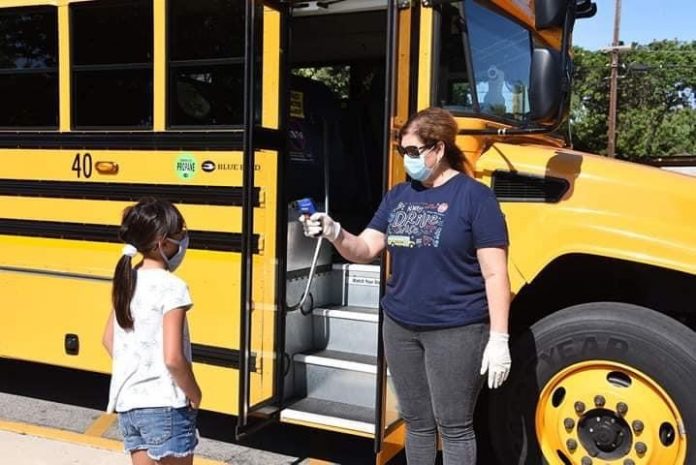The Centers for Disease Control and Prevention (CDC) issued interim guidance to schools on health checking students for SARS-CoV-2, the virus that causes COVID-19, amid some states issuing recommendations for at least a visual screening of students prior to them boarding school buses.
The CDC released considerations on June 30 that schools can utilize to help slow the spread of the novel coronavirus. The guidance states that schools should determine, in collaboration with state, tribal, territorial, and local health officials, whether to implement any testing strategy and if so, how.
The CDC referenced two types of tests to identify COVID-19. These include a viral test and an antibody test. A viral test is recommended to diagnose a current SARS-CoV-2 infection. This type of test identifies and helps to isolate people who test positive. An antibody test, however, is used to detect a past infection.
When is Testing Needed?
The CDC describes scenarios when kindergarten through 12th-grade students or staff may need to have a viral test conducted. These scenarios include testing someone with symptoms consistent with COVID-19, such as a fever, cough or sore throat, or testing an asymptomatic individual who is known to have had recent exposure to SARS-CoV-2.
The CDC states that conducting symptom screenings at school is one way to help lower the risk of COVID-19 on school grounds. However, the CDC advises that testing is not helpful in circumstances of asymptomatic or pre-symptomatic instances. Therefore, CDC adds, health screenings will not prevent every infected person with COVID-19 from entering school grounds.
Isolating Sick Children or Staff
The CDC guidance recommends immediately separating students and staff with COVID-19 symptoms at school in a pre-determined isolation room or area. It also says that sick individuals should go home or to a healthcare facility.
Guidance issued in several states also includes recommendations on isolating individuals who display signs of COVID-19. For example, Oregon guidance dictates that if a student displays symptoms prior to being transported on the school bus, they should be provided with a face covering and still be transported to their campus. The student would have to remain at least six feet away from others during the ride.
Related: Screening Student Health Prior to Boarding School Bus Rife with Complexities
Related: American Academy of Pediatrics Says Students Need In-Person Instruction
Related: Texas School Districts Discuss CDC Guidelines for Transportation After Coronavirus
Related: CDC Recommends One Student Per School Bus Seat, Skipping Rows
Wyoming issued similar guidance this month that recommends children who show symptoms should be isolated in a designated area on the bus. School districts are encouraged to also have a plan in place for once the bus carrying the sick student arrives at the school.
The CDC says its considerations are not meant to replace any previous guidance, and implementation should be guided by what is feasible, practical and tailored to the needs of the community.
Editor’s Note: See a list of states that have issued guidance at stnonline.com/go/sg, as of this writing.
















